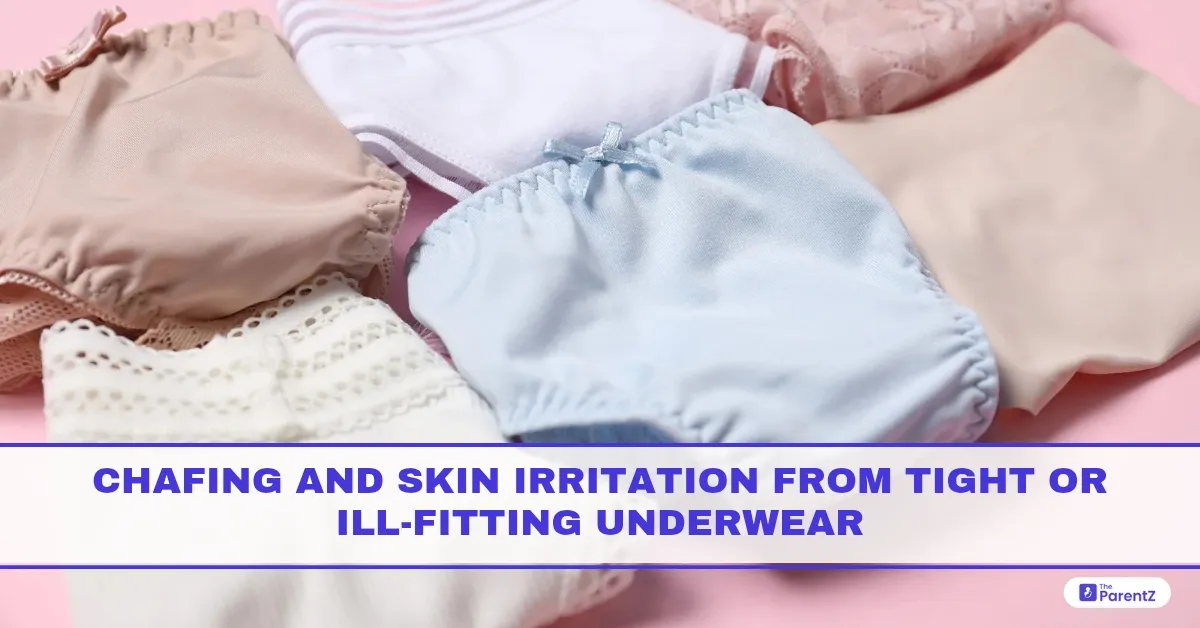We don’t usually think much about underwear until it starts bothering us. Whether it’s itchy seams, red rashes, or a weird burning feeling after school or sports, the culprit might be closer than you think: tight or ill-fitting underwear.
No matter your age or style, comfy underwear is more than just a fashion choice. It plays a big role in protecting your skin, keeping sweat in check, and letting your body breathe. When things go wrong, like tight waistbands, rough fabric, or poor fit, your skin lets you know.
Here’s what’s really happening under those layers, and how to keep the irritation away.
What Is Chafing, Really?
Chafing is a kind of skin irritation caused by rubbing, heat, moisture, or friction. In the case of underwear, this often happens in sensitive areas like:
- The inner thighs
- Around the groin
- Waistbands or elastic edges
- Buttocks or in-between skin folds
When fabric keeps rubbing against your skin—or skin rubs against skin—it can lead to:
- Red, sore patches
- Burning or stinging sensations
- Rash-like bumps or raw skin
- Peeling or dryness in irritated areas
And when you add sweat, tight elastic, or synthetic materials into the mix, things can get even more uncomfortable.
Why Tight or Poorly Fitting Underwear Is a Problem
Here’s what happens when your undies aren’t a good match for your body:
1. Too Tight = Too Much Friction
Elastic that digs into the skin or underwear that rides up can rub the same spot again and again—especially when you’re walking, running, or sitting in class all day.
2. Wrong Size = Bunching or Pinching
If they’re too small, they tug and press. If they’re too big, they bunch and fold—both can cause rubbing and irritation in places you don’t want.
3. Synthetic Fabrics Trap Sweat
Materials like nylon, polyester, and spandex don’t breathe well. That means sweat stays on the skin, which weakens the outer layer and increases friction and the risk of rashes.
4. Seams and Tags Can Scratch
Rough stitching, itchy tags, or raised logos might look cool, but they can leave behind marks, especially in sensitive areas.
Common Triggers for Kids, Tweens, and Teens
Chafing doesn’t play favorites. It can show up anytime, especially when:
- You’re playing sports, dancing, or at summer camp
- You’ve been in wet clothes (like swimsuits or sweat-soaked undies) too long
- You’re wearing tight jeans or uniforms over snug underwear
- There’s no time to change after P.E., practice, or long bus rides
- You’re growing fast and your body shape is changing but your underwear isn’t!
Even toddlers can experience chafing from snug training pants or elastic waistbands during active play.
How to Tell if It’s Just Chafing or Something More
Chafing usually feels:
- Tender or sore when touched
- Hot or itchy, especially after movement
- Better after a day or two with rest and care
If the area becomes very red, oozing, crusty, or painful, it could be an infection (like a yeast infection or bacterial rash), and it’s best to get checked by a doctor.
Tips to Prevent Chafing and Keep Skin Happy
Good news: You don’t need fancy creams or powders to stop chafing. Small changes in your clothing and habits can make a big difference.
1. Choose the Right Size
Not too tight, not too loose. The fit should be snug enough to stay in place, but not dig into the skin or leave marks.
2. Pick Breathable Materials
Look for 100% cotton or bamboo underwear—soft, stretchy, and great at absorbing moisture.
3. Change When Damp or Sweaty
If your underwear feels wet or sticky after a long day or a workout, change it as soon as you can. Sitting in damp clothes is a one-way ticket to chafing and rashes.
4. Keep the Area Clean and Dry
Wash daily with mild, fragrance-free soap. After bathing, gently pat dry—especially in folds or creases.
5. Wash Clothes Gently
Use gentle detergents without strong fragrances or dyes. Harsh chemicals can leave behind residues that irritate skin.
6. Use Barrier Creams if Needed
If you’re prone to rubbing in certain spots, a thin layer of petroleum jelly, aloe gel, or diaper rash cream can help prevent friction.
7. Give Skin a Break at Night
Wearing loose pajamas or sleeping without underwear (if appropriate) can help irritated skin breathe and recover overnight.
What to Do If Skin Is Already Irritated
If you notice chafing:
- Stop wearing the tight clothing or fabric that caused it
- Keep the area clean, dry, and cool
- Apply a soothing cream (like aloe, zinc oxide, or calendula)
- Avoid scratching—it can make things worse
- If the irritation lasts more than a few days, gets worse, or shows signs of infection, talk to a healthcare provider
Quick Myth-Busters
Only girls get chafing down there
Nope! Anyone can experience it. It’s about skin, friction, and moisture, not gender.
Wearing underwear to bed is safer
Not always. Letting your skin breathe at night (especially in loose clothes) can actually help prevent irritation.
Itchy means dirty
Itchy doesn’t mean unhygienic. It often just means the skin barrier is irritated, usually from friction, sweat, or a bad fabric choice.
Final Thoughts
Underwear is your skin’s first line of defense, and it deserves attention. Whether you love superhero prints, stretchy briefs, or cozy cotton shorts, the key is choosing what feels good, fits right, and lets your body breathe.
No one talks much about chafing, but once you understand it, it’s easy to stop it before it starts. Be kind to your skin, it’s with you for life!








Be the first one to comment on this story.